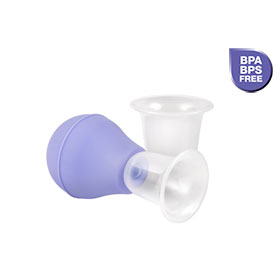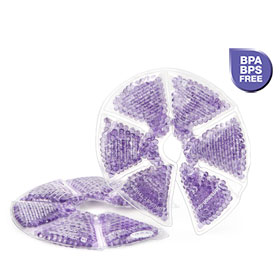Advice Articles
- Home
- Advice Articles
- Being a new mum
- First Hour Of Life
First Hour Of Life

How the baby is born can have an influence on this very first hour… analgesia/assisted/caesarean birth may make the baby somewhat less instinctive in its behaviour, as well as influence the mother’s ability to interact with her baby in the hour after birth (ref).
This is where the midwife can help greatly to facilitate the start of breastfeeding. Breastfeeding is a public health issue and getting the breastfeeding relationship off to a good start has a large, positive knock on effect on the future health of mother and baby (ref), as well as the short term effect of helping the placenta detach from the uterus and be expelled by the mother in a safe and timely manner (ref).
Understanding the instinctive stages a newborn experiences helps professionals know what to do and not do as they witness the mother and baby get to know each other.
When a baby and it’s placenta are born lactogenesis II is triggered by the rapidly falling maternal progesterone levels and rapidly increasing prolactin levels, though oxytocin levels are crucial to aid milk removal from the breast (Recognising and treating delayed or failed lactogenesis II, Hurst N.M., J Midwifery Women’s Health 2007, 52(6): 588-594). Any caregiver needs to be aware to encourage oxytocin production in the new mother. Privacy, calm, quiet, kindness and dimmed lights are all implicated in optimising oxytocin levels.
The newborn goes through several instinctive behaviour once born. Being in skin to skin contact with its mother straight after birth is of utmost importance to the baby to get the right feedback to its behaviours and therefore initiate breastfeeding optimally.
Skin to skin:
● helps regulate breathing, heartrate, temperature, bloodpressure and bloodsugars in the newborn
● encourages attachment behaviours
● improves breastfeeding initiation and even long term success
● reduces stress in both mother and baby
● increases oxytocin production
● improves immune function in the newborn by enabling breastfeeding and seeding the microbiome
Once the baby is placed on the mother immediately after birth, which is of course also possible after a caesarean section, with some adaptations, the baby most likely, if undisturbed, will display 9 stages of instinctive behaviour as described by Widstrom in 1990 (Widstrom A, Wahlberg V, Matthiesen AS. Short-term effects of early suckling and touch of the nipple on maternal behaviour. Early Hum Dev. 1990;21:153–163.):
1. The Birth Cry: This usually happens as soon as the baby’s lungs are aerated for the first time.
2. Relaxation: The baby ‘arrives’ and calmly takes a breather from the exertion of birth.
3. Awakening: A few minutes after birth the baby starts to become active and make small movements with its shoulders, opens its eyes and some mouth movements may be observed.
4. Activity: The rooting reflex becomes obvious and general movements increase.
5. Rest: The baby may rest at any point while working its way through the different stages.
6. Crawling: Short bursts of arm and leg movements propel the baby towards the breast slowly. This usually happens approximately 30 minutes after birth.
7. Familiarisation: The baby acquaints itself with the mother by kneading and massaging the breast and licking the nipple.
8. Suckling: After familiarising itself with the nipple the baby self latches and suckles. This often happens about an hour after birth, but may happen at a later stage.
9. Sleep: After working through the previous stages, the baby tends to fall asleep, as does the mother, frequently.
It is important not to interrupt the 9 stages as this may cause the baby from bypassing the suckling stage and going to the sleeping stage prematurely.
On a practical level, for example as a midwife on a busy labour ward, respecting this crucial hour after birth can bring its own challenges. The need to document the birth and fill in measurements, weights and following routines that make a labour ward run smoothly often stand in direct opposition to what the mother-baby-dyad needs. Seeing this hour as a time investment with a long term pay off with regards to physiological, psychological, spiritual health of mother and baby can be helpful.
Some important points for healthcare professionals:
● Leave well alone: After birth, place the newborn on its mother’s skin, dry gently and then watch the mother claim her baby.
● Don’t touch: Assess visually, only intervening if absolutely necessary for wellbeing of either mother or baby.
● Forget routines: Do not weigh, examine (unless absolutely necessary for clinical reasons), administer Vitamin K prophylaxis or do anything else that may interfere with mother-baby dyad, even suturing in case of perineal tearing can wait. If examinations and treatment are necessary, try to keep them as unintrusive as possible.
● Think oxytocin: Dim the lights, stop visitors, respect privacy, keep mother and baby warm and comfortable, speak quietly and only if necessary.
● Step back, write your notes, have a cup of tea and know that by not doing anything you are potentially making a huge contribution to public health.
Widstrom A, Wahlberg V, Mattthiesen AS. Short-term effects of early suckling and touch of the nipple on maternal behaviour. Early Hum Dev. 1990;21:153–163. Recognising and treating delayed or failed lactogenesis II, Hurst N.M., J Midwifery Women’s Health 2007, 52(6): 588-594 Effects of mother-infant skin-to-skin contact on severe latch-on problems in older infants: a randomized trial, Svensson K.E., Velandia M.I., T Matthiesen A.T., Welles-Nyström B.L. and Widström A.E., International Breastfeeding Journal 2013, 8:1 doi:10.1186/1746-4358-8-1Related Categories
You May Also Need
-

HPA® Lanolin Nipple Cream for Sore & Cracked Nipples
Sore nipples are very common during breastfeeding and can often be a result of the uncomfortable positioning... View -

LatchAssist™ Nipple Everter
When a baby cannot achieve a good latch, trying to breastfeed can be frustrating and upsetting for both... View -

Thera°Pearl® 3-in-1 Breast Therapy
Flexible and reusable, Thera°Pearl’s 3-in-1 Breast Therapy packs have soft covers that can be slipped... View
